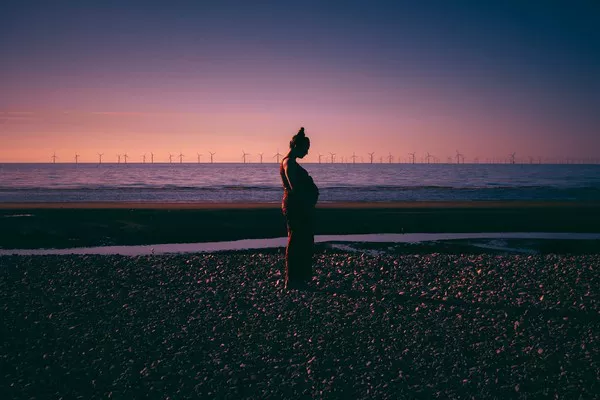Bringing a new life into the world is an extraordinary experience, but it can also bring some unexpected changes to your body. One of these changes that many new mothers encounter is postpartum hair loss. While it can be distressing, it’s a common occurrence and typically temporary. In this comprehensive guide, we’ll delve into everything you need to know about postpartum hair loss, from why it happens to strategies for managing and coping with this phenomenon.
Understanding Postpartum Hair Loss
Postpartum hair loss, medically known as postpartum alopecia or telogen effluvium, is the excessive shedding of hair that many women experience after giving birth. It typically occurs in the months following childbirth, peaking around three to six months postpartum. While it can be alarming to see more hair in your brush or shower drain, rest assured that it’s usually a temporary condition.
Why Does Postpartum Hair Loss Happen?
To understand postpartum hair loss, it’s essential to grasp the hair growth cycle. Hair goes through different phases, including the anagen phase (growth), catagen phase (transition), and telogen phase (rest). During pregnancy, hormonal changes, particularly an increase in estrogen levels, can prolong the anagen phase, resulting in thicker, fuller hair. This is why many pregnant women notice their hair looking healthier and more voluminous.
However, after childbirth, hormone levels begin to normalize. This shift can trigger a larger number of hairs to enter the telogen phase simultaneously. When these hairs eventually shed, it can seem like a significant amount of hair loss, leading to postpartum hair loss.
Is Postpartum Hair Loss Normal?
Yes, postpartum hair loss is entirely normal and experienced by many women. In fact, it affects about 40-50% of new mothers. It can be unsettling, especially when combined with the other physical and emotional changes that occur postpartum, but it’s typically a temporary condition.
When Does Postpartum Hair Loss Start and How Long Does It Last?
Postpartum hair loss usually begins a few months after childbirth, typically around three months postpartum. It tends to peak between three to six months postpartum and can continue for several more months, gradually improving as the hair growth cycle normalizes. By the time your baby reaches their first birthday, you should notice a significant reduction in hair shedding.
Managing and Coping with Postpartum Hair Loss
While postpartum hair loss is a natural process, there are strategies you can employ to manage and cope with it effectively:
Nutrition: Maintain a balanced diet rich in essential vitamins and minerals, including biotin, zinc, and iron. These nutrients are crucial for healthy hair growth.
Gentle Hair Care: Be gentle with your hair to minimize additional damage. Avoid excessive brushing or tight hairstyles that may stress your hair shafts.
Choose the Right Products: Consider using shampoos and conditioners designed to strengthen hair and reduce breakage. Look for products that are sulfate-free and contain ingredients like biotin and keratin.
Avoid Heat Styling: Limit the use of heat styling tools like flat irons and curling wands, as they can damage already weakened hair. If you need to use heat, use a heat protectant spray.
Stress Management: High levels of stress can exacerbate hair loss. Practice stress-reduction techniques such as meditation, deep breathing, and gentle exercise.
Scalp Massage: Gently massaging your scalp can improve blood circulation and stimulate hair follicles, potentially aiding in hair regrowth.
Consult a Professional: If you’re concerned about your hair loss or it persists beyond a year postpartum, consider consulting a dermatologist or healthcare provider. They can help rule out any underlying medical conditions and offer personalized advice.
Haircuts: Trimming your hair regularly can help remove split ends and make your hair appear fuller and healthier.
Hair Extensions or Wigs: Some women opt for hair extensions or wigs to enhance their hair’s appearance temporarily.
When to Seek Medical Advice
While postpartum hair loss is typically benign, there are instances when it could be a sign of an underlying medical issue. Consider seeking medical advice if:
Your hair loss is severe, continues beyond a year postpartum, or worsens over time.
You notice bald spots or unusual hair thinning.
You experience other concerning symptoms, such as changes in your menstrual cycle or unexpected weight loss.
Your healthcare provider can perform tests to rule out potential causes of excessive hair loss, such as thyroid disorders or anemia.
Conclusion
Postpartum hair loss can be emotionally challenging, but it’s essential to remember that you’re not alone in this experience. Many new mothers go through the same process, and it’s typically a temporary phase. Focus on taking good care of yourself, both physically and emotionally, during this time. Seek support from friends, family, and healthcare professionals if you have concerns about your hair loss or its impact on your well-being. Ultimately, as your baby grows and your body continues to adjust, your hair should gradually return to its pre-pregnancy state, leaving you to enjoy the beauty and joy of motherhood.


